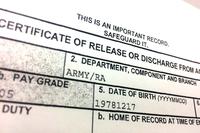There has been some recent buzz about the House of Representatives proposing more cuts to veterans’ benefits. This time, the focus has fallen on VA Healthcare and excluding some veterans over others. Here is what you need to know about the debate.
The House Budget Committee is looking at possible plans to cut $6 billion from VA Healthcare for 1.3 million veterans who are in Priority Group 7 and 8. Roughly 10 percent of these, some 130,000 veterans, will be forced out of the VA system with no available alternatives. Veterans from Group 7 & 8 have either a 0 percent service-connection or no service-connected rating. While this does not mean the veteran is fit as a fiddle, it does imply they do not need the amount of care needed for other vets. These veterans pay co-pay and have incomes over $32,000 and net-worths under $80,000, depending on geography. In other words, they aren’t dirt poor but certainly not wealthy, either.
The Congressional Budget Office believes the U.S. can save $62 billion over the next 10 years by removing services for these veterans altogether. According to the agency, 90 percent of the veterans in question have access to some form other healthcare other than VA funded. However, the CBO does not comment on whether the alternative healthcare is affordable.
Interestingly, the news has received mixed reviews from veterans. Some support the cuts under the presumption that these veterans in question don’t deserve the services they receive. Others feel the cuts are unnecessary and unfair given the very nature of being a disabled veteran, whether service-connected or not.
Regardless, these cuts will have negative impacts on many disabled veterans who will fall through the cracks of this kind of approach. While 90 percent have access to some other kind of healthcare, that still leaves 130,000 veterans without any kind of care at all.
In addition, it cuts care for veterans with injuries undiagnosed by the VA Compensation and Pension system. Throughout history, the VA has been very slow at changing its approvals for unseen disabilities. PTSD did not result in a service-connected disability rating until just over 20 years ago. Vietnam era vets also had a tough 40-year battle getting the VA to recognize the full effects of Agent Orange exposure. Desert Storm veterans are a very recent reminder of unseen injuries from certain unknown exposures. This proposal has implications for future disabled veterans with diseases the VA has yet to diagnose.
Future disabled veterans with yet undiagnosed diseases and modest incomes will no longer be able to lean on the VA for treatment of injuries they receive from service that are not diagnosed. If they’re lucky, these new veterans will be able to find insurance that will cover pre-existing diseases without policy payout limits. Hopefully their premiums won’t cost more than the wage they make from working. Ironically, had they never enlisted, there would be no risk getting sick to begin with.
What I did not read was that the $6 billion cut from care would somehow stay within the system. It won’t. The veterans at risk of being cut only comprise $4.5 billion of the budget dollars on the chopping block. And it’s not as if that money will go back into the system to help pay for new doctors and facility improvements. Currently, the VA Healthcare system is dramatically bogged down with increasing numbers of veterans returning from the Middle East needing care. Removing $6 billion from the system will make the situation worse, even without the 1.3 million veterans Congress is looking to cut out. There will likely be “pruning” from within the current pool of doctors and nurses.
Many Veteran Service Organizations are wary about the cuts because of a fear that more cuts down the road will be easier to justify. If enacted, this high number of cuts will reduce the critical mass of veterans in the system. Then, larger facilities that are currently operating at full tilt will be forced to throttle back the breadth of care provided. This could result in less equipment and less doctors, as previously noted. The VA system is already doing more with less. Reducing its numbers by artificially cutting demand through this bill will have some negative impacts to the more disabled veterans currently not at risk of being cut. Simply put, less money equals less care at a lower quality, period.
For some, this may seem like a fair alternative to help curtail the budget deficits resultant from 3 wars and Wall Street bailouts. I just don’t see cutting VA Healthcare as being a fair solution for any disabled veteran, regardless of income or disability rating. No matter what side of the coin you fall on, contact your Congressman to tell them where you stand.
For more on these issues, go to www.DisabledVeterans.org.
Update: Do something for fellow veterans and communicate with your elected official now!
Click here to communicate with your elected official about this proposal.



